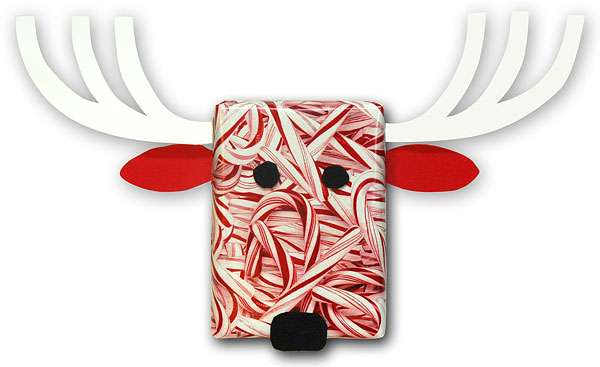
Over the holidays a white plastic take-out food box turned up in our kitchen. It’s one of a new style of take-out box. Not the white closed-cell foam variety. It had a textured surface with rounded crenillations. It had two simple closure snaps. It had a square, raised protrusion in the center of the lid. There was something 19th century about its shape and detail. It only lacked some fabric complexity and a bit of metal.
I added grey cords taken from shopping-bag handles, gluing them into a molded groove in the box lid’s outer edge. Next, I added the red ribbon which surrounds the crenillations. I added some silver shopping-bag paper trim: a square with rounded corners in the central embossed medallion, and two little folded pieces on top of the closure snaps, to simulate metal hardware.
With the gift inside resting on tissue paper, I snapped the box shut and wrapped a piece of blue gauze ribbon around it all. I added the label sticker. It is hard to capture the odd charm of this wrap in a single photo. Humor plays a part in this wrap as a utilitarian box shifts into a new context.







